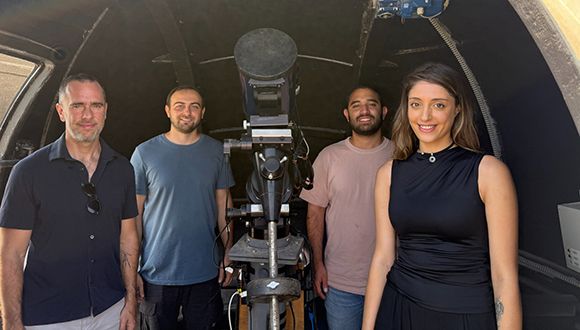
A study led by Dr. Tomer Shenar from TAU's School of Physics and Astronomy, Dr. Hugues Sana of KU Leuven University in Belgium, and Dr. Julia Bodensteiner of the University of Amsterdam reveals that the earliest massive stars were likely born in pairs, similar to those seen in our own galaxy. The findings were published in Nature Astronomy.
The researchers estimate that this discovery provides the first convincing evidence that massive binary stars were common in the early universe. Such systems, they explain, influence the universe on many scales - from forming black holes of all sizes, to powering energetic supernovae, and enriching galaxies with the elements that make life possible.
Binary Systems Across Time
The researchers explain that massive stars, those with at least ten times the mass of the Sun, are responsible for a variety of cosmic phenomena. A single massive star can emit more energy energy than a million Sun-like stars. Massive stars shape the structure and properties of their host galaxies, produce most of the universe's heavy elements, and end their lives in powerful supernova explosions, leaving behind the most mysterious objects we know: neutron stars and black holes.
In our galaxy, the Milky Way, it is well established that most massive stars are born in "binary systems", pairs of stars in orbits so close that they exchange matter and sometimes even merge during their lifetimes. These interactions fundamentally alter the evolution and fate of the massive stars.
Massive stars - those with at least ten times the mass of our Sun - drive many of the universe's most powerful phenomena. A single massive star can emit more energy than a million sun-like stars. They shape galaxies, create heavy elements, and end their lives in supernova explosions that leave behind neutron stars or black holes.
In our Milky Way, it is well established that most massive stars form in binary systems, orbiting so closely that they exchange matter and sometimes even merge. These interactions profoundly affect how such stars evolve and die.
Simulating the Early Universe Nearby
A key question is whether this "binarity" also characterized the massive stars that formed shortly after the Big Bang. The James Webb Space Telescope has detected early galaxies filled with massive stars, but their great distance makes it impossible to directly study their stellar systems.
Dr. Shenar explains: "To overcome this limitation, we developed an observational survey designed to study massive stars in a relatively nearby galaxy that mimics the chemical conditions of the early universe. As part of the survey Binarity at LOw Metallicity (BLOeM), we carried out a two-year observing campaign with the VLT in Chile, during which we obtained spectra of about 1,000 massive stars in the Small Magellanic Cloud-a neighboring galaxy with a low metal content, resembling the composition of the young universe."
Finding Stellar Companions
Dr. Shenar adds: "Spectral analysis of the data enables measurement of periodic motions of stars, thereby revealing the presence of stellar companions. From detailed analysis of 150 of the most massive stars, we found that at least 70% are part of close binary systems. This constitutes the first direct and convincing evidence that massive stars commonly existed in binaries even under the conditions of the early universe, perhaps even more frequently than today."
The team concludes that these results change our understanding of how the universe evolved - from the formation of black holes and the nature of supernova explosions, to the enrichment of galaxies with heavy elements essential for the formation of stars, planets, and life itself.






